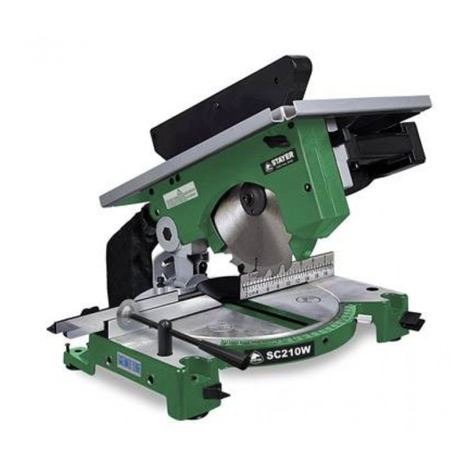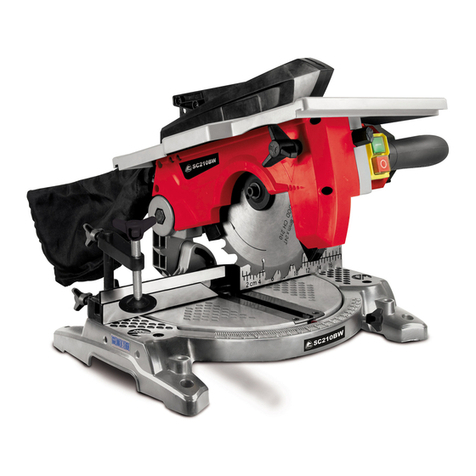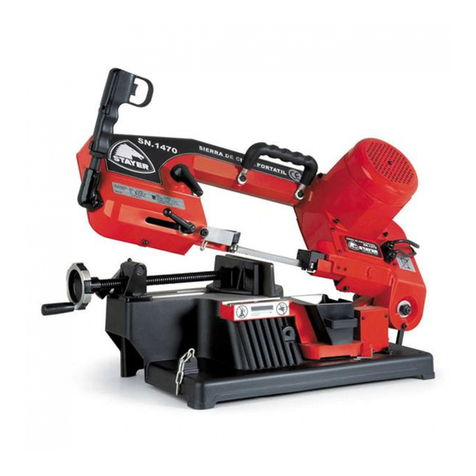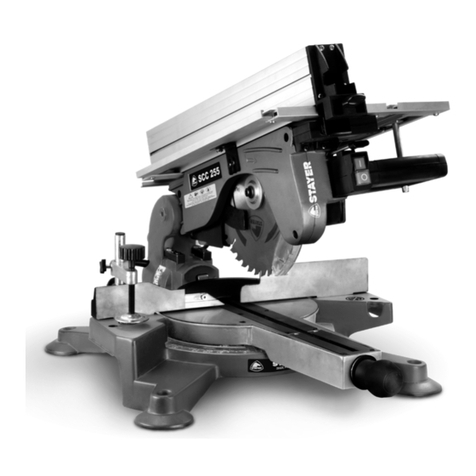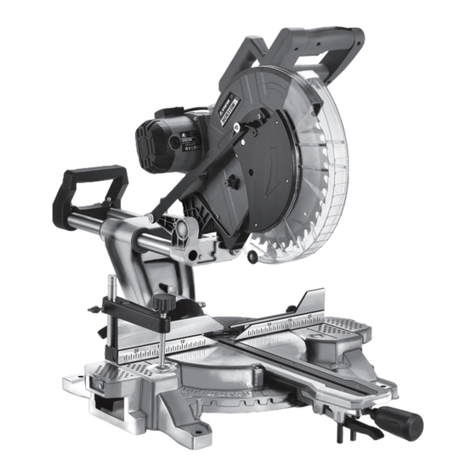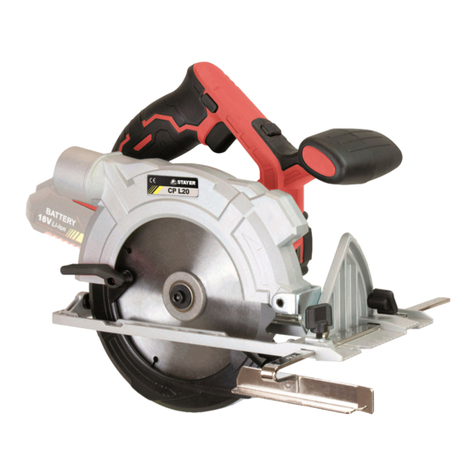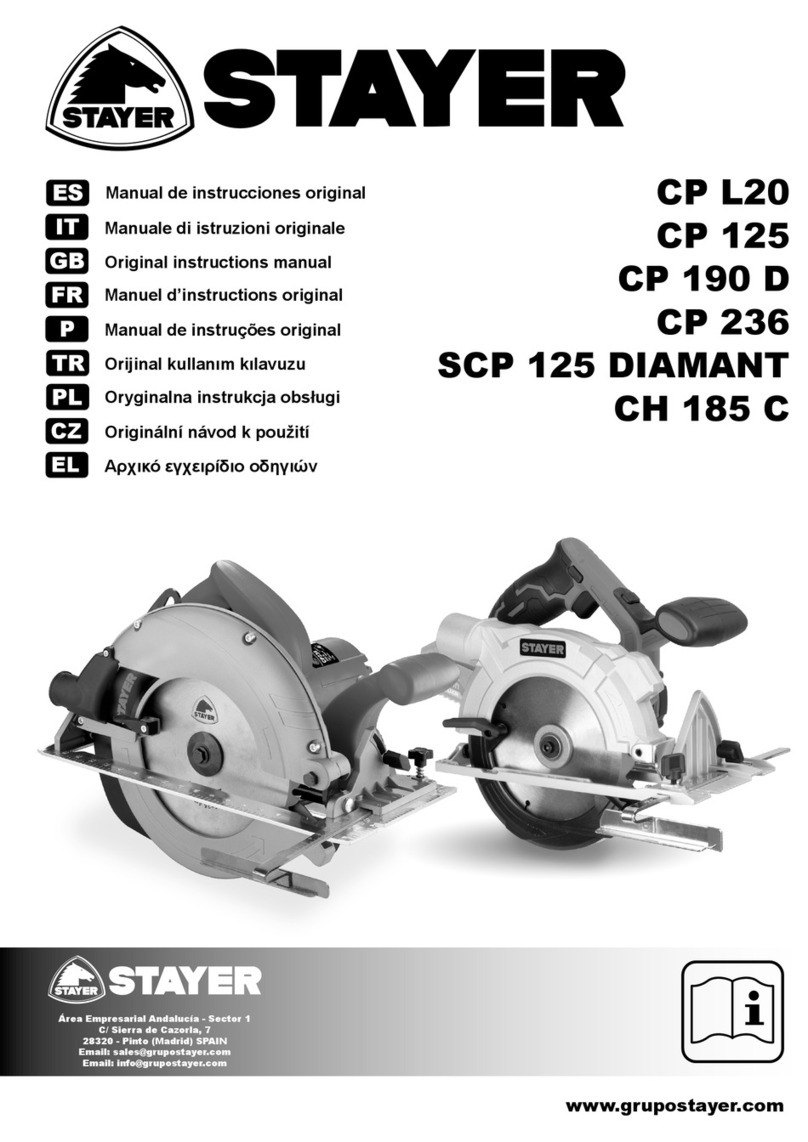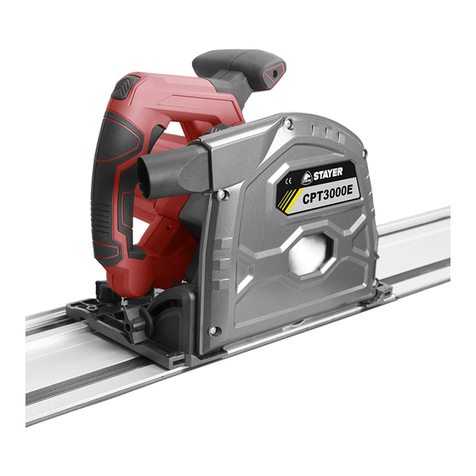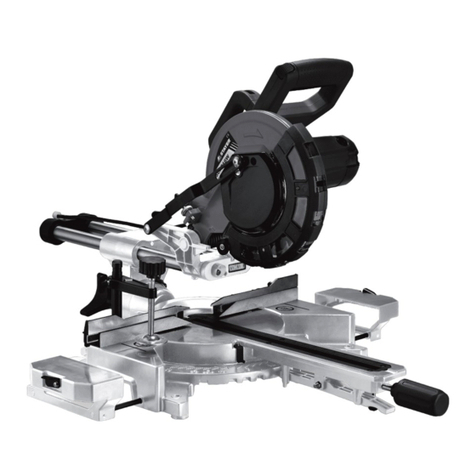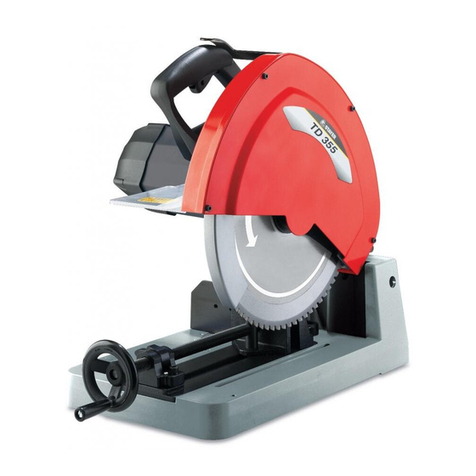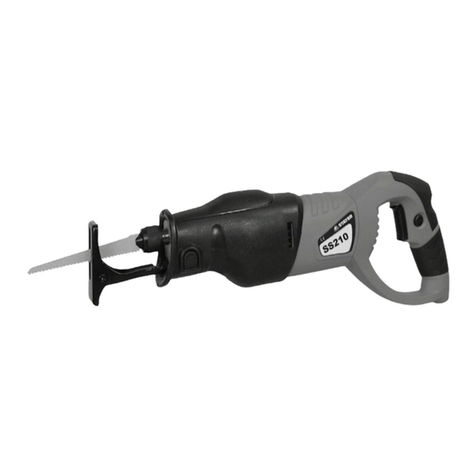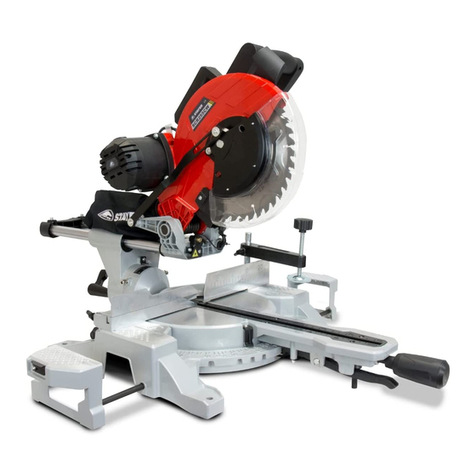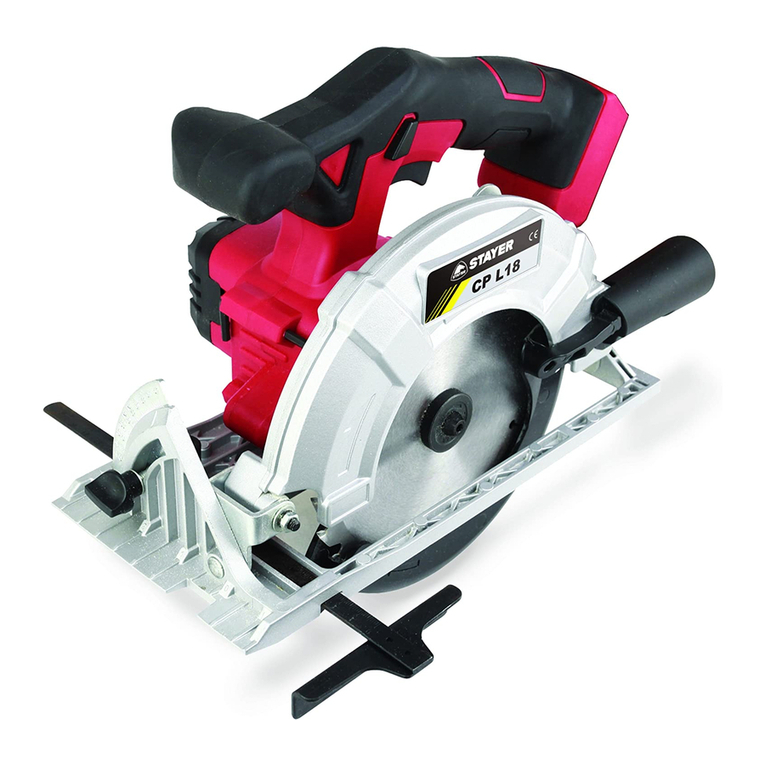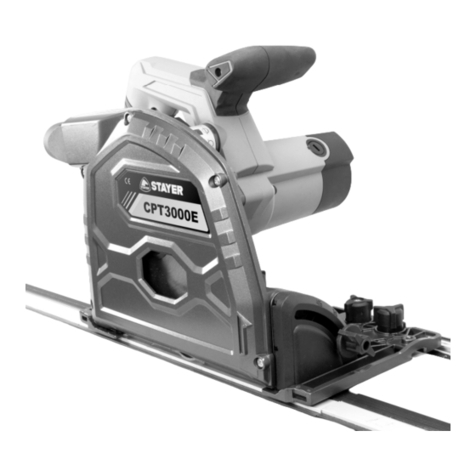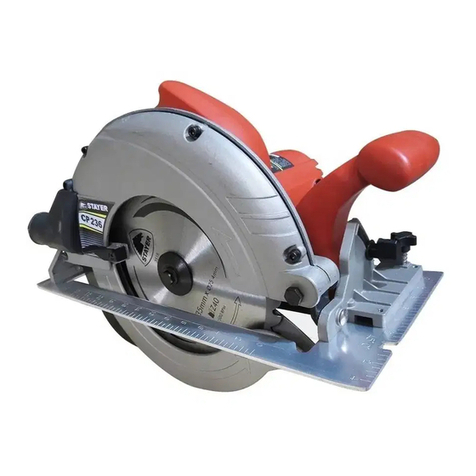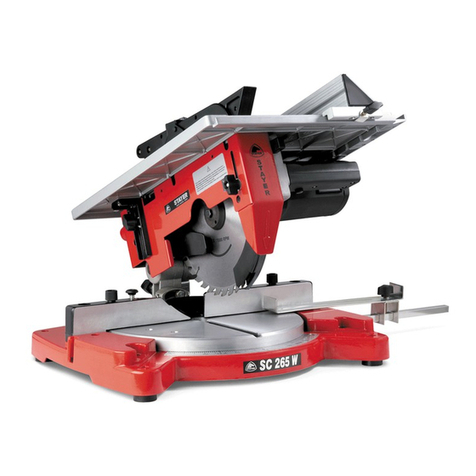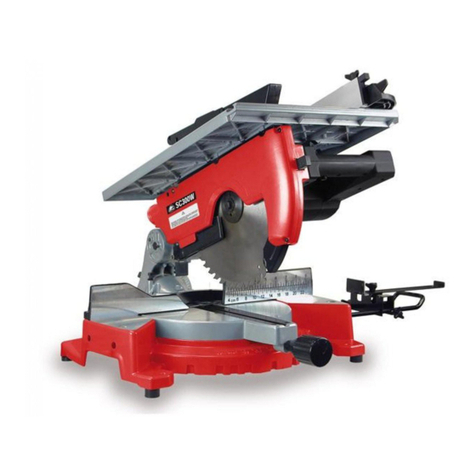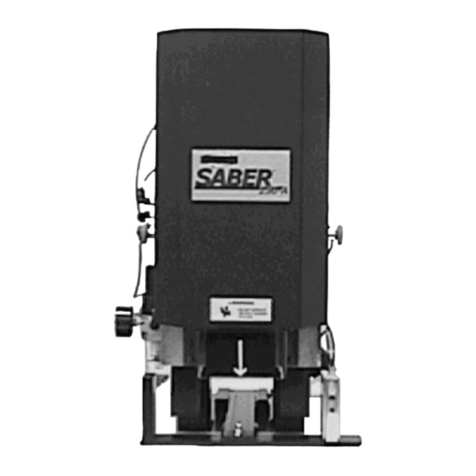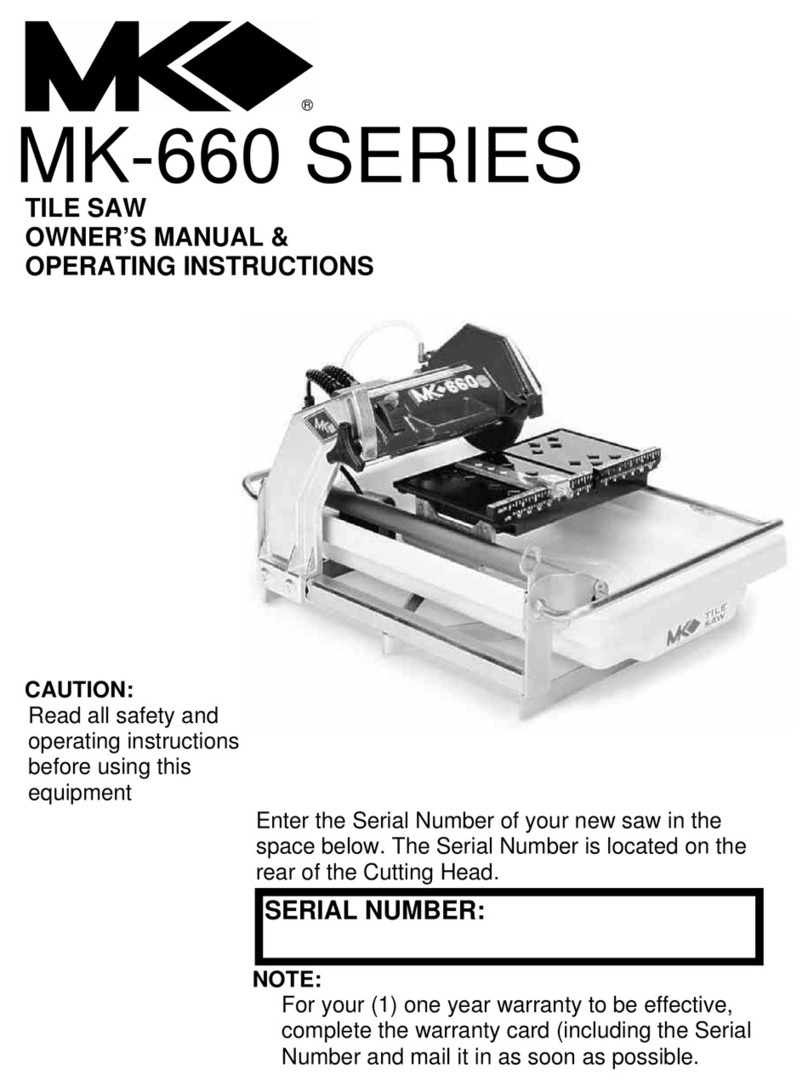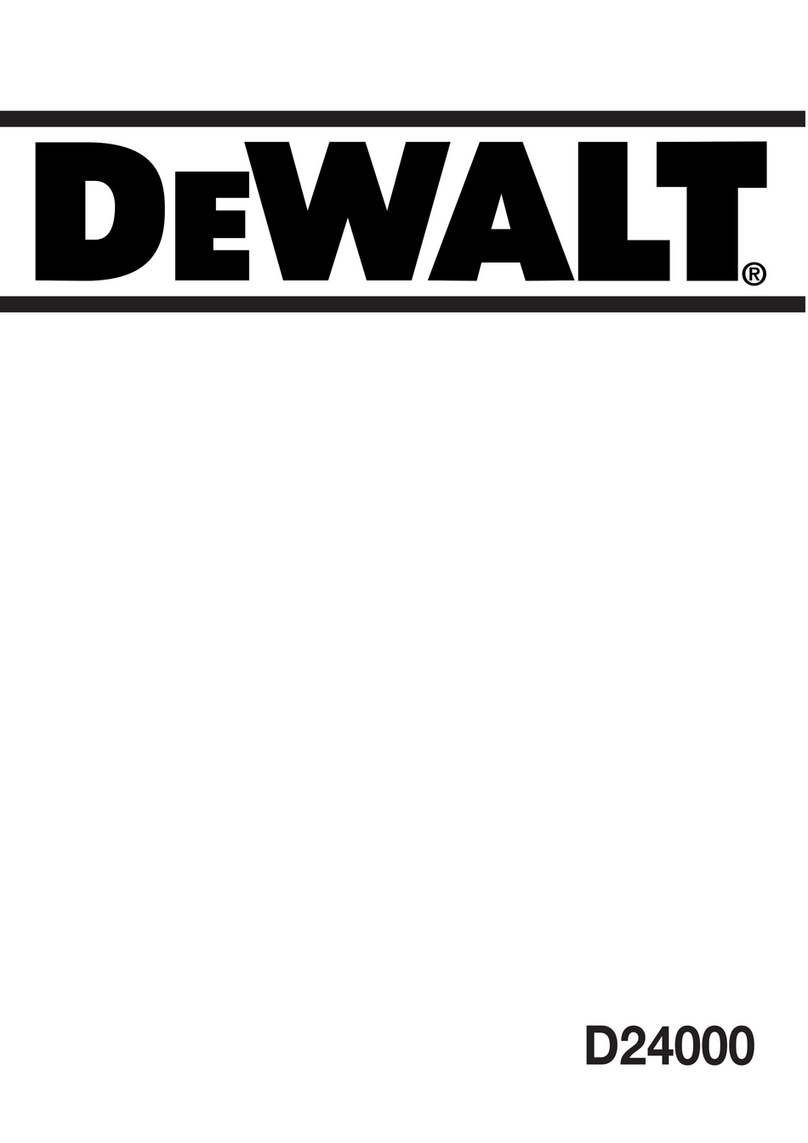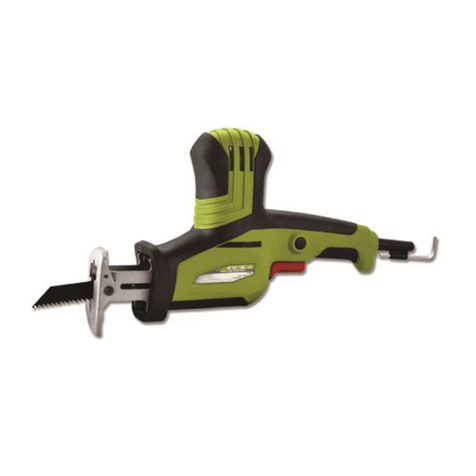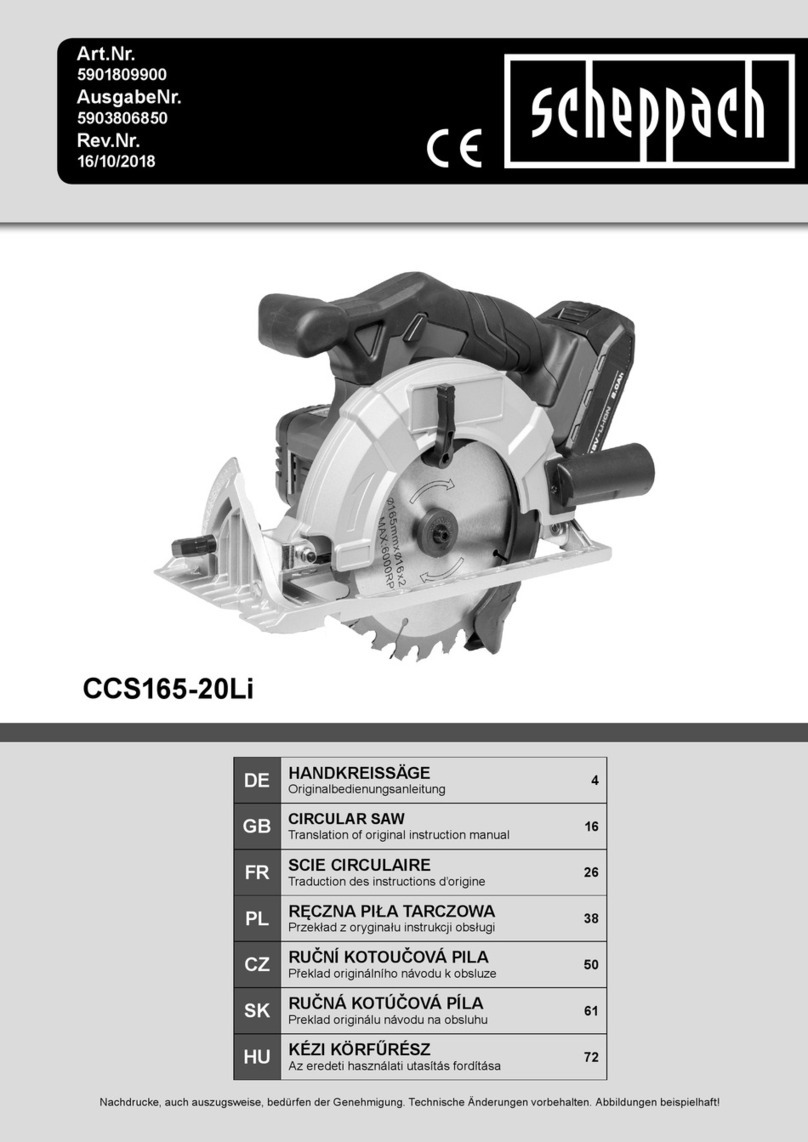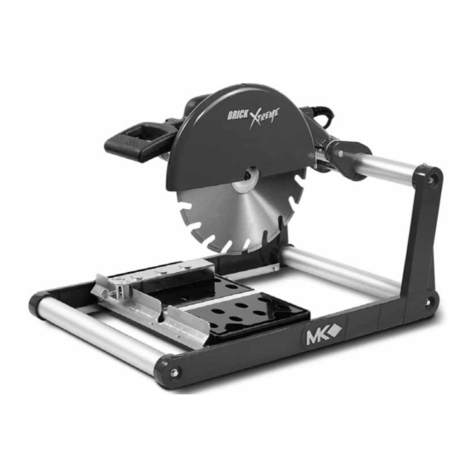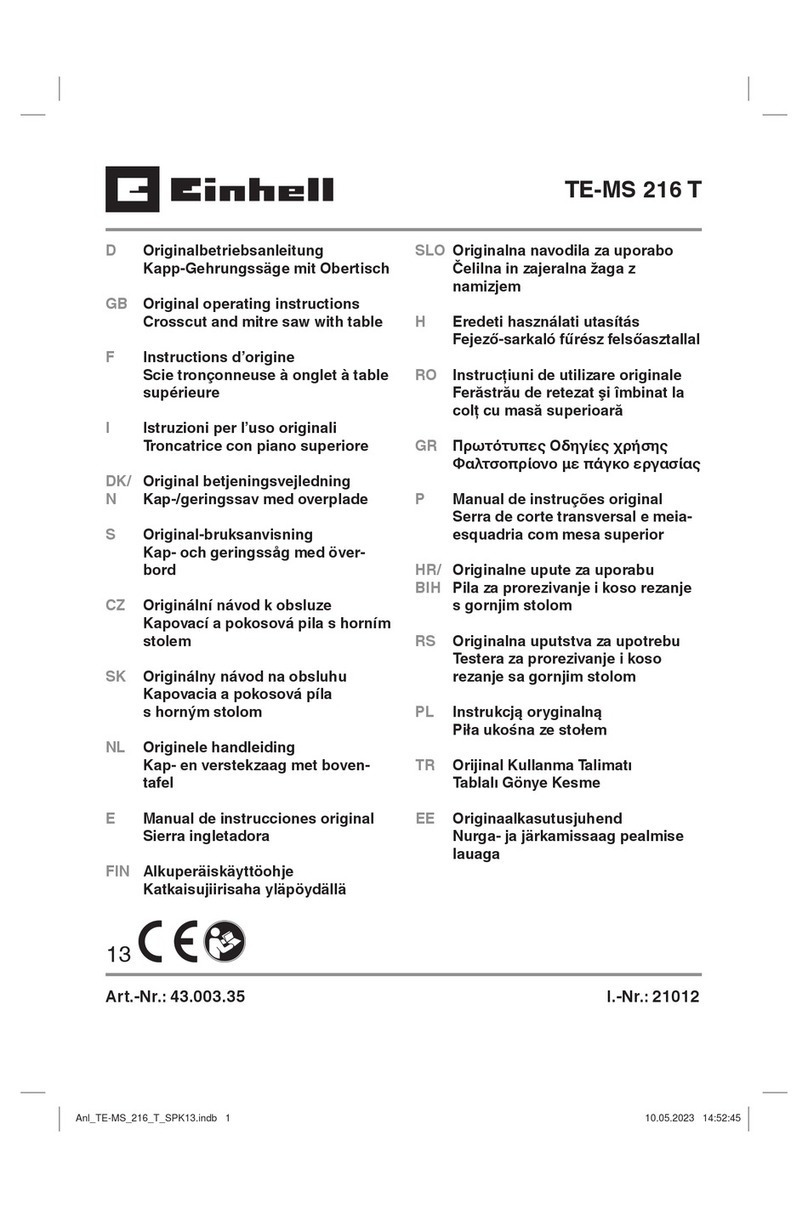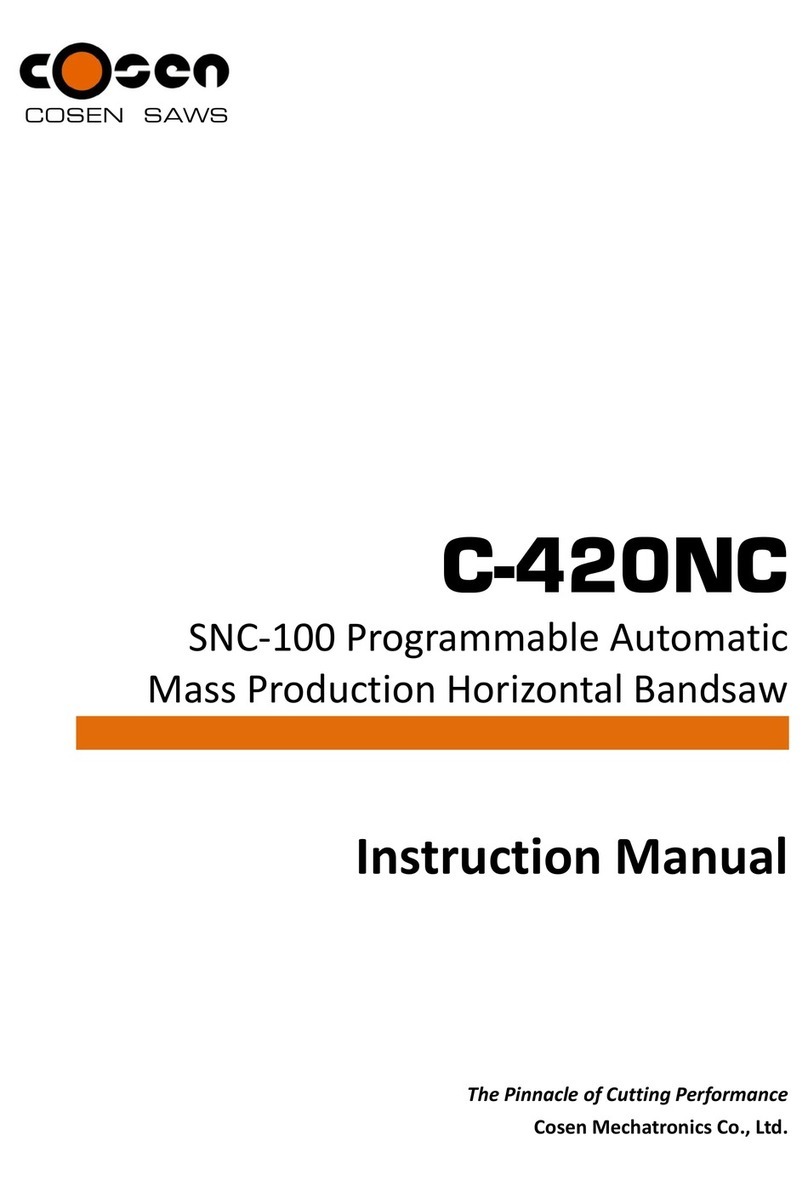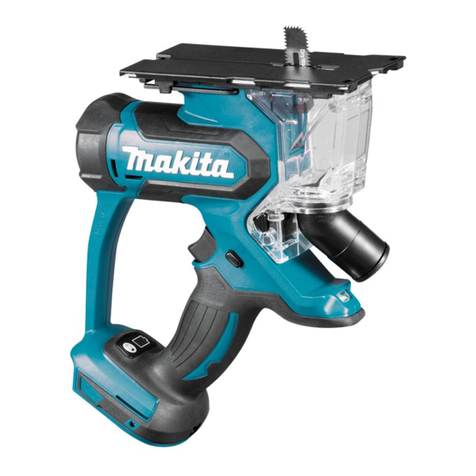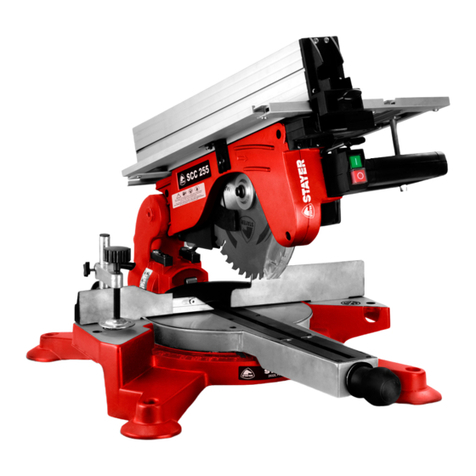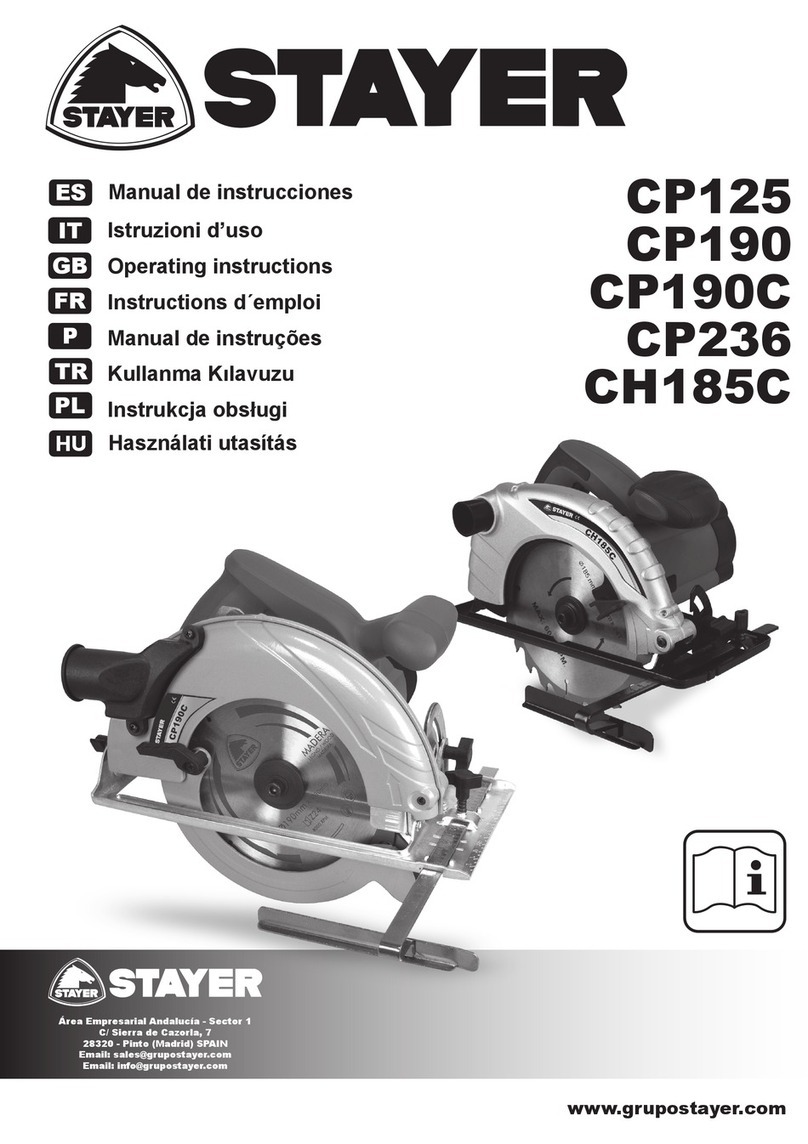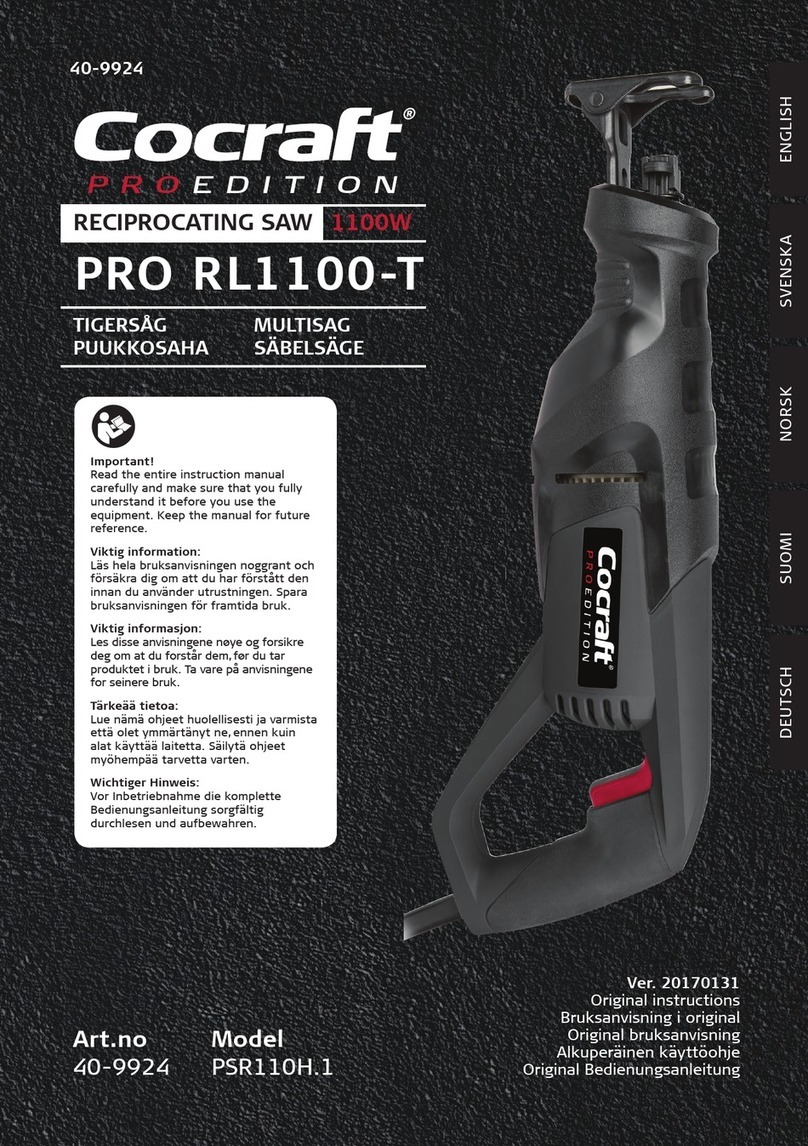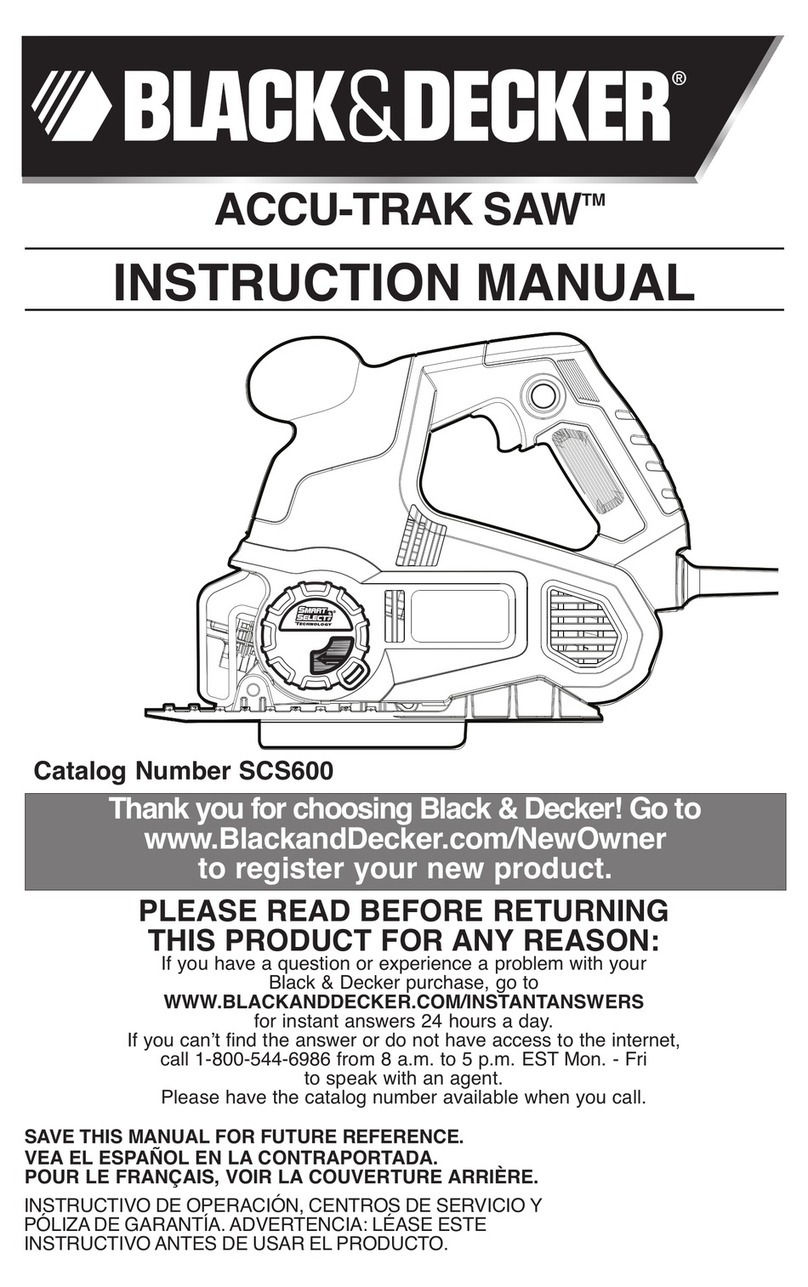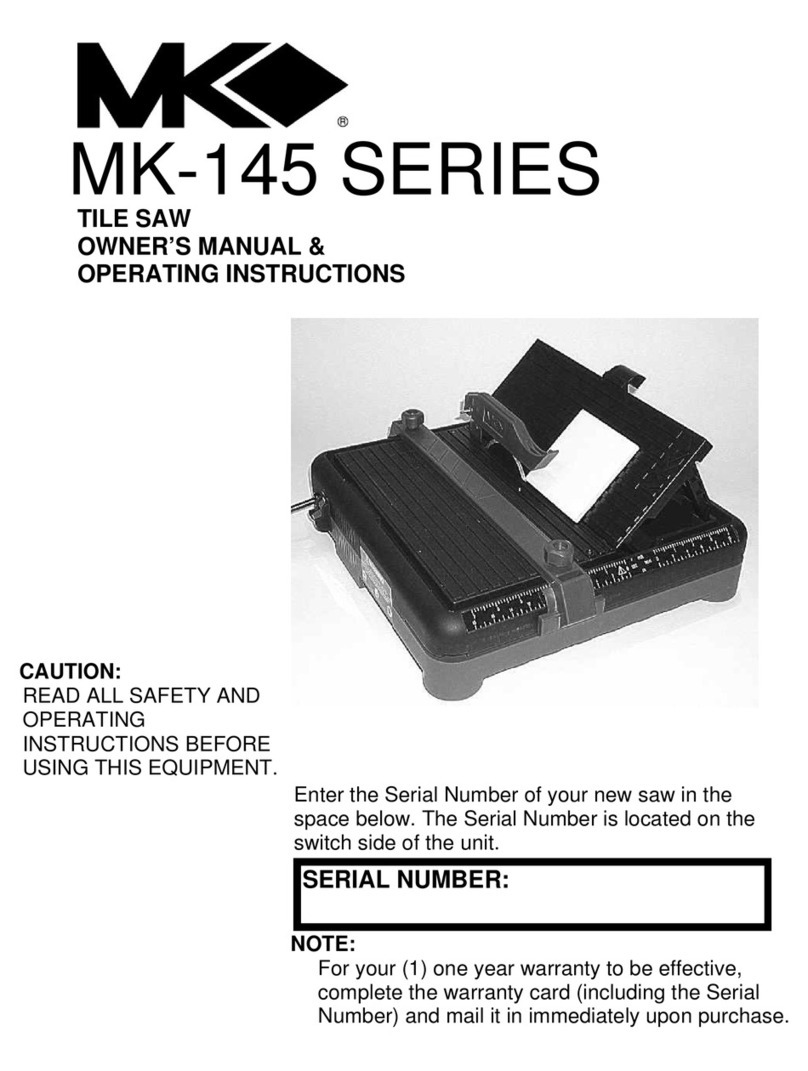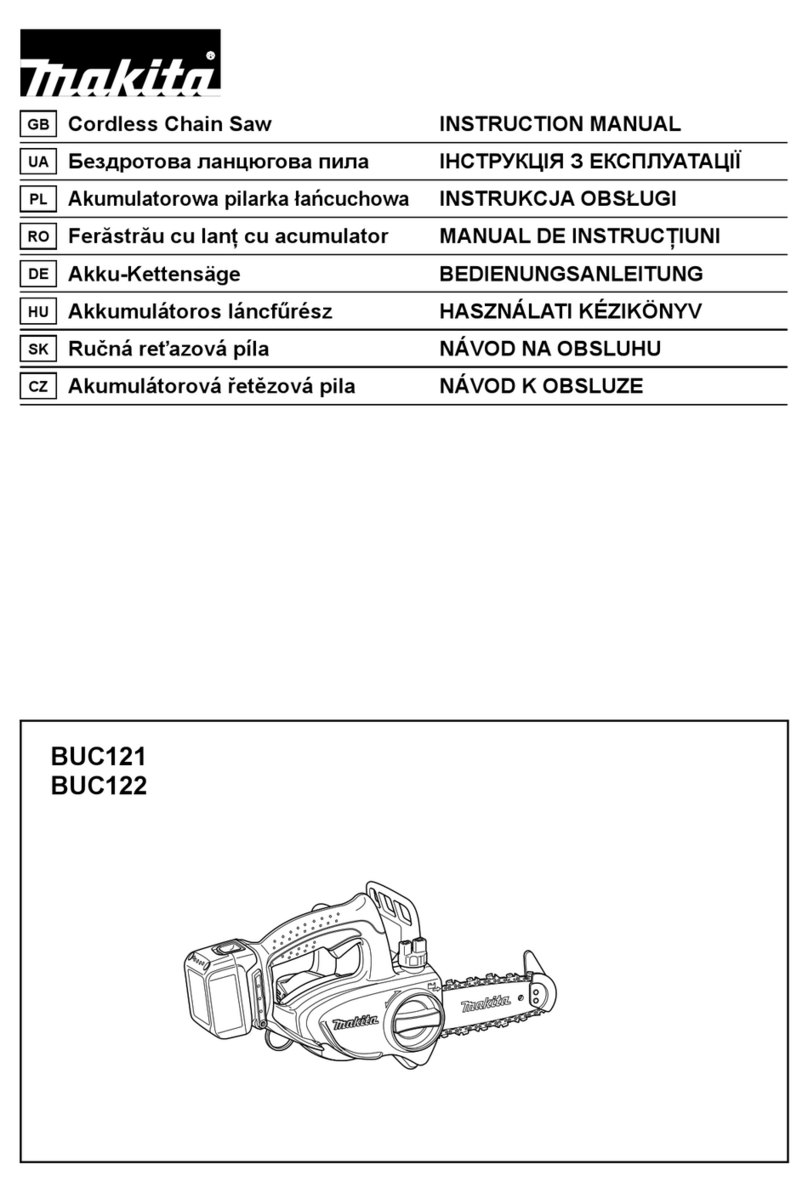
ESPAÑOL
13
13
corporales con supercies puestas a tierra o masa (por
ejemplo, tubos, radiadores, estufas, refrigeradores).
4 Mantener a otras personas alejadas. No permitir que
personas, especialmente niño, no relacionadas con el
trabajo, toquen la herramienta o cables extensibles y
mantenerlas alejadas del área de trabajo.
5 Almacenar las herramientas que no se están utili-
zando. Cuando no se estén utilizando, las herramientas
debieran almacenarse en un lugar seco y cerrado, fuera
del alcance de los niños. No ponga ningún objeto encima
de la máquina, ni almacene la máquina puesta al reves.
6 No forzar la herramienta. Esta trabajará mejor y de
modo más seguro a la característica asignada para la
cual está destinada.
7 Utilizar la herramienta correcta. No forzar una herra-
mienta pequeña para que haga el trabajo que correspon-
de a una herramienta pesada. No utilizar herramientas
en propósitos para los cuales no estén destinadas; por
ejemplo, no usar sierras circulares para cortar las ramas
de los árboles o los troncos.
8 Vestir apropiadamente. No utilizar ropa amplia ni ob-
jetos de joyería que puedan ser enganchados por las
partes en movimiento. Se recomienda calzado antides-
lizante cuando se trabaje en exteriores. Utilizar gorros
protectores para el pelo largo.
9 Usar equipo de protección. Usar gafas de protección.
Usar caretas o máscaras para evitar el polvo si las ope-
raciones de corte pueden producirlo.
10 Conectar el equipo de extracción de polvo. Si se pro-
porcionan dispositivos para la conexión a equipos de
extracción de polvo y equipos colectores, asegurar que
estén conectados y sean utilizados adecuadamente.
11 No maltratar los cables. No tirar nunca del cable para
desconectarlo de la base de conexión. Mantener el cable
alejado del calor, el aceite y los bordes cortantes.
12 Asegurar el trabajo. Cuando sea posible, utilizar abra-
zaderas o un torno de banco para sujetar el trabajo. Es
más seguro que utilizar la mano.
13 No alargue demasiado su radio de acción. Mantener un
apoyo rme sobre el suelo y conserve el equilibro en todo
momento.
14 14.Mantener las herramientas con cuidado. Man-
tener las herramientas de corte aladas y limpias para
un funcionamiento mejor y más seguro. Seguir las ins-
trucciones para la lubricación y cambio de accesorios.
Examinar periódicamente los cables extensibles y reem-
plazarlos si están dañados. Mantener las empuñaduras
secas, limpias y libres de grasa y aceite.
15 Desconectar las herramientas. Cuando no se utilicen,
antes de la reparación y cuando se cambien accesorios
tales como hojas de sierra, brocas y cuchillas, desconec-
tar las herramientas de la alimentación.
16 Retirar llaves de ajuste y llaves inglesas. Acostum-
brarse a comprobar que las llaves de ajuste e inglesas
sean retiradas de la herramienta antes de ponerla en
funcionamiento.
17 Evitar un arranque intencionado. Asegurar que el in-
terruptor está en la posición “abierto” cuando se enchufe
la herramienta.
18 Utilizar cables extensibles para exteriores. Cuando la
herramienta se utilice en el exterior, utilizar solamente ca-
bles extensiblesdestinados a usarse en exteriores, que
estén marcados para tal n.
19 Estar alerta. Mirar lo que se hace, utilizar el sentido co-
mún y no trabajar con la herramienta cuando se esté
cansado.
20 Comprobar las partes dañadas. Antes de volver a usar
una herramienta, ésta debería comprobarse cuidado-
samente para determinar que va a funcionar apropia-
damente y que será apta para la función a la que esté
destinada. Examinar la alineación, jación y apriete de
las partes móviles y jas, la rotura de las partes, el mon-
taje y otras condiciones que puedan afectar a su funcio-
namiento. Una protección u otra parte que esté dañada
debería ser reparada apropiadamente o sustituida por un
servicio técnico autorizado, a menos que se indique otra
cosa en el manual de instrucciones. Hacer sustituir los in-
terruptores defectuosos por un servicio técnico autoriza-
do. No utilizar la herramienta si el interruptor no enciende
y apaga.
21 Advertencia. El uso de cualquier accesorio o comple-
mento distinto del recomendado en este manual de ins-
trucciones puede producir riesgo de daños personales.
22 Hacer reparar la herramienta por personal cualica-
do. Esta herramienta eléctrica cumple con los requisitos
de seguridad apropiados. Las reparaciones solamente
debieran llevarse a cabo por personal cualicado utili-
zando repuestos originales, de otro modo se podría pro-
ducir unriesgo considerable para el usuario.
19. CARACTERÍSTICAS TÉCNICAS
Información sobre ruidos y vibraciones
Valores de medición determinados según EN 62841-1 Pue-
de encontrar los valores en la página 5
También son adecuados para estimar provisionalmente la
solicitación experimentada por las vibraciones. El nivel de
vibraciones indicado ha sido determinado para las aplicacio-
nes principales de la herramienta eléctrica.
Por ello, el nivel de vibraciones puede ser diferente si la he-
rramienta eléctrica se utiliza para otras aplicaciones, con úti-
les diferentes, o si el mantenimiento de la misma fuese de-
ciente.puede suponer un aumento drástico de la solicitación
por vibraciones durante el tiempo total de trabajo. Para de-
terminar con exactitud la solicitación experimentada por las
vibraciones, es necesario considerar también aquellos tiem-
pos en los que el aparato esté desconectado, o bien, esté en
funcionamiento, pero sin ser utilizado realmente. Ello puede
suponer una disminución drástica de la solicitación por vibra-
ciones durante el tiempo total de trabajo.
Fije unas medidas de seguridad adicionales para proteger
al usuario de los efectos por vibraciones, como por ejemplo:
Mantenimiento de la herramienta eléctrica y de los útiles,
conservar calientes las manos, organización de las secuen-
cias de trabajo.
¡Colocarse un protector de oídos!
Estos datos son válidos para tensiones nominales de [U]
230/240 V ~ 50/60 Hz - 110/120 V ~ 60 Hz. Los valores pue-
den variar si la tensión fuese inferior, y en las ejecuciones
especícas para ciertos países. Preste atención al nº de artí-
culo en la placa de características de su aparato, ya que las
denominaciones comerciales de algunos aparatos pueden
variar.
20. ELIMINACIÓN
Recomendamos que las herramientas eléctricas, accesorios
y embalajes sean sometidos a un proceso de recuperación
que respete el medio ambiente.
¡No arroje las herramientas eléctricas a la basura!
Sólo para los países de la UE:
Conforme a la Directiva Europea 2012/19/UE
sobre aparatos eléctricos y electrónicos inservi-
bles, tras su transposición en ley nacional, de-
berán acumularse por separado las herramien-
tas eléctricas para ser sometidas a un reciclaje
ecológico.
Reservado el derecho de modicación.




















